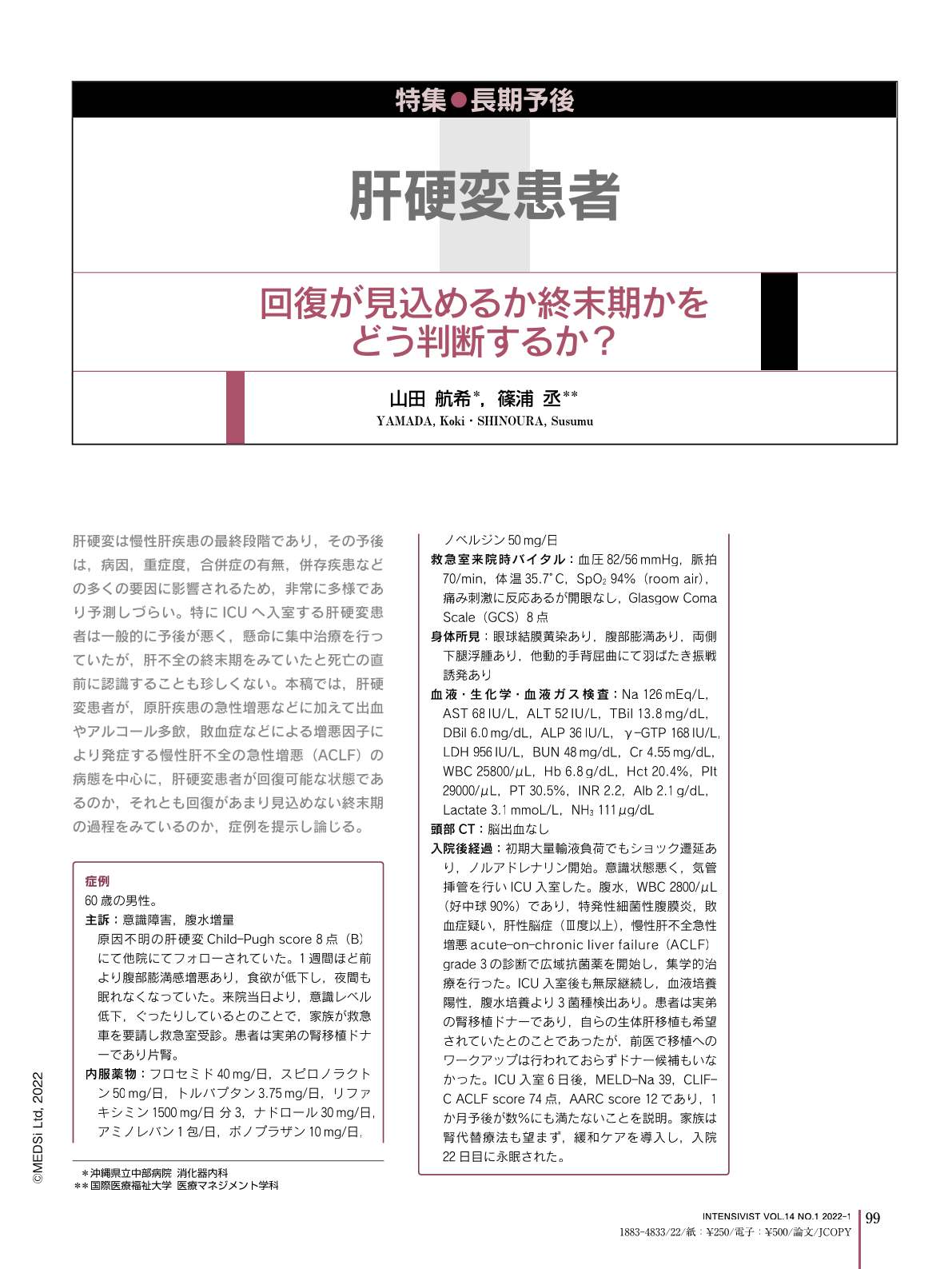Japanese
English
- 有料閲覧
- Abstract 文献概要
- 1ページ目 Look Inside
- 参考文献 Reference
肝硬変は慢性肝疾患の最終段階であり,その予後は,病因,重症度,合併症の有無,併存疾患などの多くの要因に影響されるため,非常に多様であり予測しづらい。特にICUへ入室する肝硬変患者は一般的に予後が悪く,懸命に集中治療を行っていたが,肝不全の終末期をみていたと死亡の直前に認識することも珍しくない。本稿では,肝硬変患者が,原肝疾患の急性増悪などに加えて出血やアルコール多飲,敗血症などによる増悪因子により発症する慢性肝不全の急性増悪(ACLF)の病態を中心に,肝硬変患者が回復可能な状態であるのか,それとも回復があまり見込めない終末期の過程をみているのか,症例を提示し論じる。
Liver cirrhosis is the final stage of chronic liver disease, and its prognosis is extremely variable and difficult to predict because it is influenced by many factors, including etiology, severity, the development of of complications and the presence of comorbidities. In general, patients with cirrhosis admitted to the ICU have a poor prognosis, and it is not uncommon for patients to be recognized shortly before death as having been in the terminal stage of liver failure despite receiving optimal intensive care. In this chapter, we will focus on the pathogenesis of acute-on-chronic liver failure that occurs in patients with cirrhosis due to exacerbating factors such as bleeding, heavy alcohol consumption, sepsis and acute exacerbation of the primary liver disease. Finally, we will discuss how to differentiate whether patients with cirrhosis are in a recoverable stage or in the terminal stage.

Copyright © 2022, MEDICAL SCIENCES INTERNATIONAL, LTD. All rights reserved.


